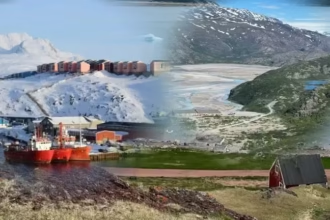Balochistan, Pakistan’s largest province, covers 43.6% of an area of 347,190 sq. km. This vast land possesses not only great hospitality from its people but also valuable resources and minerals. Abundant reserves of coal, sulfur, chromite, iron ore, barytes, marble, quartzite, and limestone are found in the province. Balochistan is blessed with ample oil reserves and holds the world’s largest reserves of copper and gold. It also has significant potential for electricity production. According to the Balochistan Board of Investment and Trade (BBoIT), the province offers excellent opportunities in the oil and gas sector for both domestic and foreign companies. Geological reports state that the Balochistan districts of Kalat, Kharan, Kohlu, and Lasbela contain enormous reserves of gas and oil.
Balochistan possesses the ninth-largest shale gas reserves in the world along its coastal belt. The province also has enormous coal reserves. Furthermore, Baluochistan is rich in renewable energy (RE) sources such as solar power, wind energy, geothermal energy, and tidal power plants, as well as non-renewable resources like coal, petroleum, and gas, which can be explored for the sustainable development and electricity production of the province.
Despite its significant resources, this southwestern province of Pakistan faces several issues related to the supply of basic necessities such as electricity, water, and gas. The residents of Balochistan have been experiencing power outages and load shedding for years, severely impacting the social and economic wellbeing of the province. The rich natural resources of Balochistan have not translated into economic prosperity for its people, and the lack of development continues to have severe impacts on the overall wellbeing and human rights of the Baloch population. It is often considered deprived of economic development and political representation compared to the other provinces. According to the Human Development Index, Balochistan has the lowest literacy rate (43.58%), the highest poverty rate (60%), and the worst indicators for health, education, and infrastructure among all provinces.
Meanwhile, according to ANI News, 64% of the population of Balochistan is deprived of electricity. Balochistan has a power demand of about 1,650 MW, but its supply is only 400 MW to 600 MW, leading to severe electrical shortages. A Balochistan MNA stated, ‘How can we imagine that Balochistan has only 36% electricity facility in 2021, as the rest of the 64% is in the dark?’ The situation in rural areas, which comprise 85% of the total population of Balochistan, is unacceptable, with only 4 hours of electricity provided on a daily basis. Furthermore, some areas are not even connected to national and regional grid stations at all. The Ministry of Power Division justifies the lack of power facilities in Balochistan by citing the scattered areas and grid line challenges in the province. Private investors face issues contributing to energy production plants due to inadequate law and order, communication infrastructure, remoteness of locations, low return on investment, water scarcity, and inappropriate Power Policy.
Moreover, the mainstay of the China-Pakistan Economic Corridor (CPEC) is energy, which is a multi-billion-dollar infrastructure project. The energy sector, including thermal, hydel, coal, and wind energy, is where about 70% of the CPEC projects are focused. Regrettably, Balochistan is not included in these programs. Six of the 13 energy-related megaprojects are in Punjab, six are in Sindh, and one is in Khyber Pakhtunkhwa. This is not the first time Balochistan has been ignored. There was a time in 1952 when natural gas was discovered in Sui, a small town in the Dera Bugti District, but the province itself was deprived of the resource. Balochistan has vast reserves of natural gas, which is a crucial source of energy for the country. However, the province itself is unable to access gas, and most of it is exported to other parts of Pakistan. As a result, many residents of Balochistan have to resort to other fuel sources such as firewood, which is both expensive and harmful to the environment.
Water scarcity in Balochistan has become acute due to several reasons, including climate change, poor infrastructure, and natural calamities. According to different reports, 80% of the people living in Balochistan do not have access to clean drinking water, and most of them rely on rainwater, which is not enough to fulfill their needs. Dr. Faiz Kakar, the former head of the International Union for Conservation of Nature (IUCN), noted that the water level continues to deplete rapidly in Quetta, Pishin, Khuzdar, Killa Abdullah, Kalat, Mastung, Lolarai, Turbat, and other districts of the province. Gwadar, which has a significant influence on the economy of our country, is facing a massive water shortage. The residents of Gwadar had hoped that CPEC would solve their water scarcity issues, but it has unfortunately fallen short. CPEC has also sparked controversy in Balochistan due to its potential environmental, cultural, and social impacts, as well as the perceived lack of transparency and participation in decision-making.
Even today, Balochistan is affected by security challenges such as insurgency, terrorism, and sectarian violence, which have claimed thousands of lives and displaced many people. The Baloch separatist movement, which seeks greater autonomy or independence from Pakistan, has been ongoing for decades and has led to frequent military operations and human rights abuses. Many Baloch nationalists argue that the federal government of Pakistan has neglected Balochistan’s rights and development, treating it as a colony rather than a province.
To sum up, these issues persist in Balochistan, and the government needs to take urgent measures to address them. Providing basic necessities such as electricity, water, and gas to the people living in this province would go a long way in improving their quality of life and socio-economic development.







